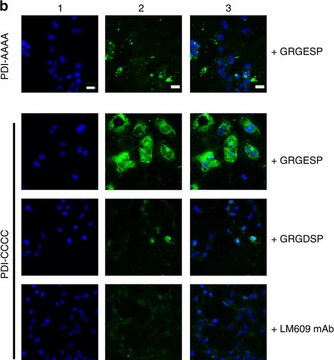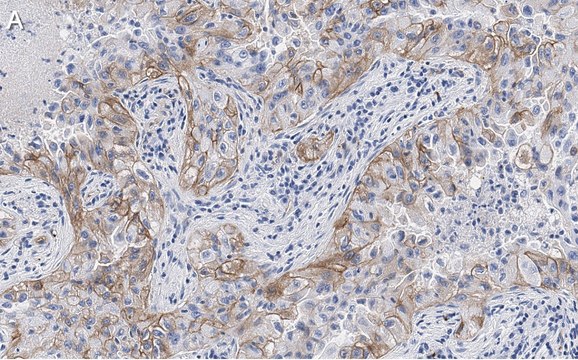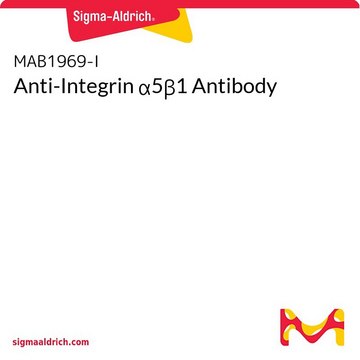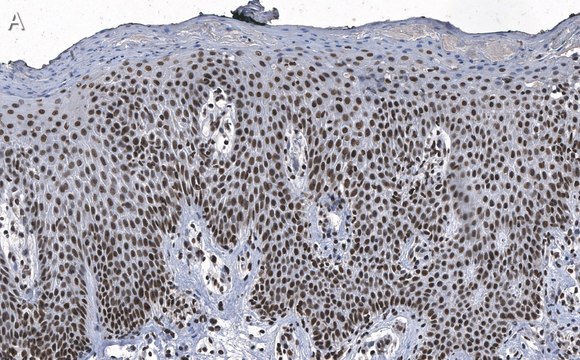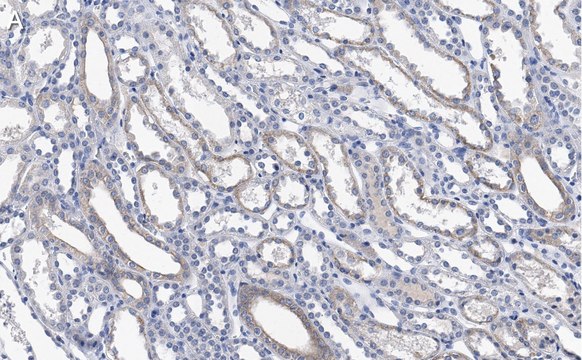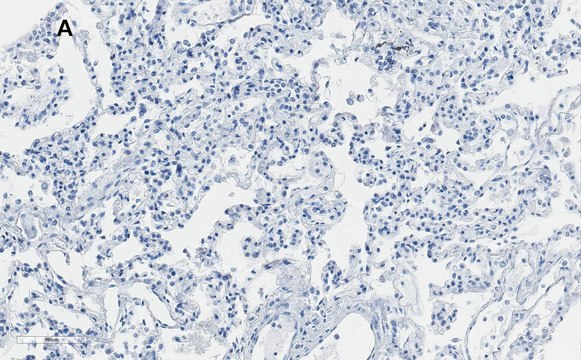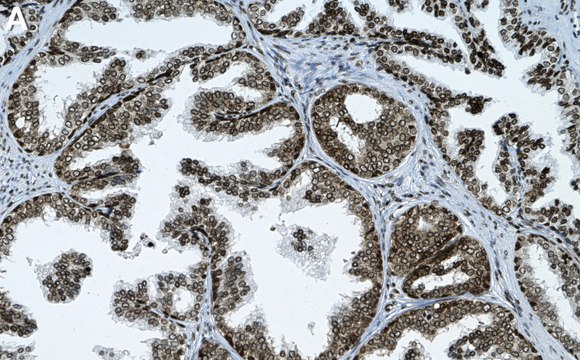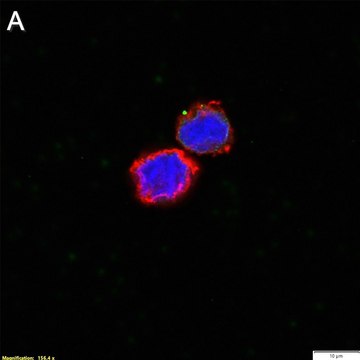MAB1876-Z
Anti-Integrin αVβ6 Antibody
mouse monoclonal, 27.1 (VNR-1)
Synonym(s):
Integrin alpha-V, Integrin αVβ3, Vitronectin receptor subunit alpha, CD51, Integrin alpha-V heavy chain, Integrin alpha-V light chain, Integrin beta-3, Platelet membrane glycoprotein IIIa, GPIIIa, CD61
About This Item
Recommended Products
Product Name
Anti-Integrin αVβ3 Antibody, clone 27.1 (VNR-1) (Azide Free), clone 27.1 (VNR-1), from mouse
biological source
mouse
Quality Level
antibody form
purified antibody
antibody product type
primary antibodies
clone
27.1 (VNR-1), monoclonal
species reactivity
human, rat
technique(s)
flow cytometry: suitable
immunohistochemistry: suitable (paraffin)
isotype
IgGκ
NCBI accession no.
shipped in
dry ice
target post-translational modification
unmodified
Gene Information
human ... ITGAV(3685) , ITGB3(3690)
General description
Specificity
Immunogen
Application
Flow Cytometry Analysis: A representative lot detected the surface expression of vitronection receptor (VnR) complex on CHO cells co-transfected with αv and either wild-type β3 or the Cam variant of Glanzmann′s thrombasthenia with the Asp119Tyr mutation (β3cam) (Loftus, J.C., et al. (1990). Science. 249(4971):915-918).
Affects Function: A representative lot blocked M21 human melanoma cells from adhering to fibrinogen (Fg), von Willebrand Factor (VWF), or fibronectin (FN) coated surface in a Integrin αvβ3-dependent manner (Pilch, J., et al. (2002). J. Biol. Chem. 277(24): 21930-21938).
Affects Function: A representative lot blocked metastatic human breast cancer cells from adhering to collagen I matrix (Felding-Habermann, B., et al. (2001). Proc. Natl. Acad. Sci. U. S. A. 98(4):1853-1858).
Cell Structure
Adhesion (CAMs)
Quality
Immunohistochemistry Analysis: A 1:50 dilution of this antibody detected Integrin αVβ3 in rat cerebral cortex tissue.
Target description
Physical form
Storage and Stability
Handling Recommendations: Upon receipt and prior to removing the cap, centrifuge the vial and gently mix the solution. Aliquot into microcentrifuge tubes and store at -20°C. Avoid repeated freeze/thaw cycles, which may damage IgG and affect product performance.
Other Notes
Disclaimer
Not finding the right product?
Try our Product Selector Tool.
recommended
Storage Class Code
12 - Non Combustible Liquids
WGK
WGK 1
Flash Point(F)
Not applicable
Flash Point(C)
Not applicable
Certificates of Analysis (COA)
Search for Certificates of Analysis (COA) by entering the products Lot/Batch Number. Lot and Batch Numbers can be found on a product’s label following the words ‘Lot’ or ‘Batch’.
Already Own This Product?
Find documentation for the products that you have recently purchased in the Document Library.
Our team of scientists has experience in all areas of research including Life Science, Material Science, Chemical Synthesis, Chromatography, Analytical and many others.
Contact Technical Service
